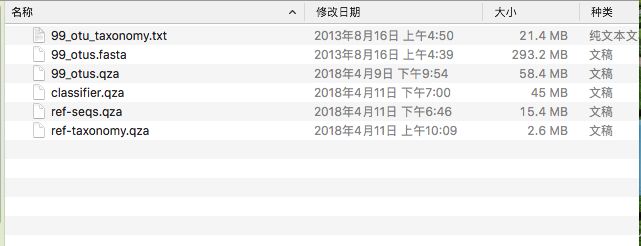- Python学习:Pandas库使用(二)之读写Excel文件——read_excel()和to_excel()函数及其参数详解
爬虫俗手小马达
python学习pandas
在Python的Pandas库中,读取和写入Excel文件主要使用read_excel和to_excel函数。以下是详细用法和示例:1.读取Excel文件:pd.read_excel()importpandasaspd#读取Excel文件df=pd.read_excel('文件路径.xlsx',sheet_name='Sheet1',header=0,usecols='A:C',skiprows=
- 基于YOLOv5、YOLOv8和YOLOv10的机场安检行李检测:深度学习应用与实现
2025年数学建模美赛
YOLO深度学习人工智能目标跟踪目标检测
引言随着全球航空运输业的持续增长,机场的安全性变得越来越重要。机场安检作为航空安全的重要组成部分,主要负责对乘客和行李进行检查,防止危险物品进入机场或飞行器。传统的安检方式多依赖人工检查,效率低下且容易出错。因此,基于深度学习的自动化行李检测系统应运而生,通过计算机视觉技术,自动识别和分类行李中的物品,大大提高了安检的效率与准确性。YOLO(YouOnlyLookOnce)系列算法,由于其高效的目
- 2025 年成为 AI 独立开发者的 3 个步骤
程序员陆通
人工智能
2025年成为AI独立开发者的3个步骤每天拆解一个AI应用或模型功能选择一个热门的AI应用或开源模型(如ChatGPT、MidJourney、Whisper),深度体验其核心功能,分析背后的技术实现。用笔记工具记录其亮点、缺点,以及你认为可以改进的地方。思考如何通过自己的开发能力优化这些功能,形成自己的产品思路。每天学习1小时AI开发相关技能针对独立开发者需要的核心技能,每天学习一点点,比如:如何
- 人工智能之数学基础:一个小例子帮你快速搞懂极大线性无关向量组
每天五分钟玩转人工智能
机器学习深度学习之数学基础人工智能线性代数机器学习极大线性无关向量组深度学习神经网络
本文重点在上一节课程中,我们学习了线性相关和线性无关。当线性相关的时候,那么说明这组向量至少存在一个向量可以被其它向量给表示,可以被表示就说明这个向量就是可有可无的,可以被替代的,这里就涉及到极大线性无关向量组的概念了,本文对此进行学习。极大无关向量组的定义与性质定义在线性空间中,如果存在一个向量组,它满足以下两个条件:一是它本身是线性无关的;二是向量空间中的任何包含它的向量组,如果仍然保持线性无
- PyInstaller 打包 exe 文件
cliffordl
python综合python开发语言
PyInstaller是一个第三方库,它能够在Windows、Linux、MacOSX等操作系统下将Python源文件打包。通过对源文件打包,Python程序可以在没有安装Python的环境中运行,也可以作为一个独立文件方便传递和管理。PyInstaller支持Python2.7和Python3.3+。可以在Windows、MacOSX和Linux上使用,但是并不是跨平台的,而是说你要是希望打包成
- Ruby Web开发框架的介绍及示例代码
YurwRuby
ruby前端开发语言
Ruby是一种简洁而强大的编程语言,广泛用于Web开发。在Ruby生态系统中,有几种实用型的Web开发框架,它们提供了丰富的功能和工具,帮助开发者快速构建可靠的Web应用程序。下面将介绍几种常用的RubyWeb开发框架,并提供相应的示例代码。RubyonRails(Rails)RubyonRails,简称Rails,是Ruby最知名的Web开发框架之一。Rails采用了MVC(Model-View
- Pytorch: torch.diag()创建对角线张量
湫兮之风
pytorchpytorch人工智能python
torch.diag()torch.diag是PyTorch中的一个函数,用于从给定的矩阵中提取对角线元素,或者构造一个以给定对角线元素为值的对角矩阵。这个函数对于矩阵分解和转换等操作非常重要。如果输入是一个向量(1D张量),torch.diag会返回一个以该向量为对角线元素的2D方阵。如果输入是一个矩阵(2D张量),则返回一个包含输入矩阵对角线元素的1D张量。torch.diag还允许你指定对角
- SpringCloud系列——5Spring Cloud 源码分析之OpenFeign
木木_2024
SpringCloud系列springcloudjavaspring架构
学习目标为什么加一个注解就能实现远程过程调用呢?推导它底层的实现主流程?OpenFeign怎么实现RPC的基本功能的通过源码验证第1章OpenFeign主流程推导要明确OpenFeign的主流程首先我们还是要明确它的核心目标是什么?说白了,OpenFeign最核心的目标就是让客户端在远程调用过程中不需要做什么多余的操作,只要拿到一个对象,然后调用该对象的方法就好了,剩下的操作都交给OpenFeig
- 看板工具提升敏捷管理:实现透明、高效的团队协作与进度管理
敏捷看板类协作工具
引言随着科技的快速发展与市场需求的不断变化,企业的管理方式也发生了深刻的变革。传统的项目管理方法渐渐无法满足当今企业面对的高效性、灵活性与快速响应的要求。特别是在研发、产品设计、市场营销等多个领域,团队需要更加灵活和透明的工作流管理方式。在这种背景下,敏捷管理应运而生。作为敏捷管理中的一种有效工具,看板(Kanban)凭借其高效、简洁且灵活的特点,已成为全球各行业中团队管理的重要组成部分。本篇文章
- python连接elasticsearch实战(附完整代码)
当初
pythonelasticsearch
python连接elasticsearchfromelasticsearchimportElasticsearchfromelasticsearch.helpersimportscanES_HOSTS=[{'host':'','port':9200,'scheme':'http'}]es=Elasticsearch(hosts=ES_HOSTS,basic_auth=('账号','密码'))#检查
- mongodb清理删除历史数据
程序员
批量清理mongodb历史数据清理程序的原来目前项目组上很多平台上线历史数据积压,导致入库查询数据缓慢,历史数据有些已经归档,进行历史数据清理删除。之前临时写shell脚本,太简陋,重新使用Python进行改造,新增备份功能,和配置文件删除指定字段和时间范围内数据。代码篇#!/usr/local/python3/bin/python3importconfigparser,logging.confi
- Ruby语言详解
编程小郭
ruby开发语言后端
Ruby语言详解Ruby,作为一种简单快捷的面向对象脚本语言,自20世纪90年代由日本人松本行弘(YukihiroMatsumoto)开发以来,便以其独特的魅力和强大的功能赢得了全球开发者的青睐。Ruby不仅继承了Perl、Smalltalk、Eiffel、Ada以及Lisp等多种语言的优点,还发展出了自己的特色和风格。一、Ruby语言的特点面向对象:Ruby从一开始就被设计成纯粹的面向对象语言,
- Ruby转Go语言:实现高效后端开发
BugTO
rubygolang前端后端
在现代软件开发中,选择合适的编程语言对于构建高效的后端系统至关重要。Ruby和Go语言都是备受开发者青睐的语言之一。然而,随着项目的发展和规模的增长,将Ruby代码迁移到Go语言成为了一个常见的需求。本文将探讨从Ruby迁移到Go语言的过程,并提供一些实用的源代码示例。了解Go语言Go语言是由Google开发的一种静态类型、编译型语言。它具有简洁、高效和并发性强的特点,适合构建高性能的后端系统。在
- Swift语言的函数实现
2501_90183952
包罗万象golang开发语言后端
Swift语言函数实现详解引言Swift是一种强类型、泛型编程的现代编程语言,广泛应用于iOS和macOS开发。函数是Swift编程中的基本构建块之一,通过函数可以将代码进行模块化,实现重用性和可读性。本篇文章将系统地介绍Swift中的函数,包括其定义、参数、返回值、闭包和高阶函数等,实现一些实用的示例,帮助读者更好地理解和掌握Swift的函数特性。一、函数的基本概念函数是执行特定任务的一段代码,
- 2025年敏捷项目管理10大爆炸性趋势,前所未见!
在当今快速发展的商业环境中,项目管理的重要性愈发凸显。敏捷项目管理作为一种灵活高效的管理方法,正逐渐成为众多企业的首选。随着技术的不断进步和市场需求的变化,我们对2025年敏捷项目管理的趋势充满期待。一、敏捷项目管理简介一方面,敏捷项目管理能够快速响应市场需求,实现高效交付。在竞争激烈的市场中,企业需要能够迅速调整项目方向,以满足客户不断变化的需求。敏捷方法论,如Scrum和Kanban等框架,以
- R语言的面向对象编程
2501_90183952
包罗万象golang开发语言后端
R语言的面向对象编程在现代编程中,面向对象编程(Object-OrientedProgramming,OOP)是一种重要的编程范式,它通过将数据和操作数据的函数结合在一起,来提高代码的重用性和可维护性。在R语言中,面向对象编程并不是一开始就被引入的,但随着其发展,R逐渐支持了多种面向对象编程的系统,例如S3、S4以及R6等。本文将深入探讨R语言的面向对象编程,介绍其基本概念、特点以及在实际应用中的
- 如何优化项目预算编制?关键步骤解析
项目管理项目管理工具项目资金
在项目管理中,资金管理是确保项目顺利进行的关键因素之一。项目资金管理的主要办法和原则包括:预算编制、资金使用监控、风险控制、财务透明度、及时报告和审计。其中,预算编制是项目资金管理的基础,它涉及到对项目所需资金的合理预测和分配。有效的预算编制不仅能帮助项目团队合理配置资源,还能为项目的成功实施提供保障。一、预算编制的重要性预算编制是项目资金管理的首要步骤,它直接影响到项目的整体执行和结果。一个合理
- 项目范围管理的最佳实践:避免软件项目膨胀
项目管理软件
在软件项目管理中,有效的项目范围管理是防止项目过度膨胀的关键。项目范围管理不仅涉及到项目的初步定义,还包括对项目需求的持续监控和控制。通过明确项目目标、合理规划资源、及时调整需求,可以有效避免项目在实施过程中出现范围蔓延的现象。特别是在软件开发中,需求的不断变化和增加往往会导致项目延期和成本超支。因此,建立清晰的项目范围界限、与利益相关者保持良好的沟通、定期进行项目审查是确保项目成功的必要措施。一
- 2024金三银四必备:Java后端开发面试总结【25个技术专题】
2401_89790869
java面试开发语言
16、List和Map、Set的区别?17、数组和链表分别比较适合用于什么场景,为什么?18、说说ConcurrentHashMap19、Java中ArrayList和LinkedList区别?20、TreeMap(可排序)21、请用两个队列模拟堆栈结构?22、Map中的key和value可以为null?23、数据结构基础之双向链表24、HashMap的底层实现25、ConcurrentHashM
- 如何建设和维护数据仓库:深入指南
数据库数据库开发
摘要数据仓库是企业数据管理的核心,它不仅支持决策制定,还能提供深入的数据分析。本文将详细介绍如何从零开始建设和维护一个高效、可靠的数据仓库,涵盖设计、实施、监控和优化的全过程。通过具体的代码示例和最佳实践,帮助读者深入理解数据仓库的构建和管理。引言数据仓库是企业数据管理的心脏,它集中存储和管理来自不同来源的数据,支持复杂的查询和分析。随着数据量的爆炸性增长,如何高效地建设和维护数据仓库成为企业面临
- Python 3.13性能大提升:免费多线程时代来临
敖行客 Allthinker
pythonjava开发语言爬虫
在编程的世界里,Python一直以其简洁、易读和强大的功能而备受青睐。随着技术的不断进步,Python的每一个新版本都带来了新的惊喜和改进。而Python3.13无疑是其中的一颗璀璨明星。在一个数据驱动的世界里,Python已经成为了一种无处不在的编程语言,它的性能和功能的提升始终是开发者们关注的热点。随着大数据、人工智能、云计算等技术的飞速发展,对编程语言性能的要求也在不断提高。在这样的背景下,
- 用goto语句写关机程序
三叶草.
c语言
“goto”语句是一种编程语言中的控制语句。它的主要作用是将程序的执行流程无条件地转移到同一函数内的另一个标记位置。不过,“goto”语句会使程序的控制流程变得复杂混乱,难以理解和维护,所以在很多的编程规范中被谨慎使用。以代码为例:
- Nginx进阶篇之端口转发
程序员
nginx透传udp、tcp端口需要nginx编译时,支持加载stream模块。./configure--prefix=/usr/local/nginx--with-stream配置stream需要在nginx的http和events区域块之间配置即可。userroot;worker_processesauto;error_loglogs/error.log;pidsbin/nginx.pid;e
- ReactNative进阶(三十五):应用脚手架 Yo 构建 RN 页面_reactnative 脚手架
2401_84438654
程序员reactnativearcgisreact.js
算法冒泡排序选择排序快速排序二叉树查找:最大值、最小值、固定值二叉树遍历二叉树的最大深度给予链表中的任一节点,把它删除掉链表倒叙如何判断一个单链表有环由于篇幅限制小编,pdf文档的详解资料太全面,细节内容实在太多啦,所以只把部分知识点截图出来粗略的介绍,每个小节点里面都有更细化的内容!如果你觉得对你有帮助,可以戳这里获取:【大厂前端面试题解析+核心总结学习笔记+真实项目实战+最新讲解视频】sudo
- 小白WEB前端学习(五)
Sun ᥫᩣ涵
WEB前端前端学习
续:小白WEB前端学习(四)继续正式学习CSS(三)6.float布局!主要用于左右做图片,右文字的题目标准流标准流也叫文档流,指的是标签在页面中默认的排布规则,使⼀个元素脱离标准文档流有三种方式1.浮动2.绝对定位3.固定定位例如:块元素独占一行,行内元素可以一行显示多个。浮动作用:让块元素水平排列属性名:float属性值:left和right浮动后会脱离标准流,等于开了一个新的页面,内容在的话
- 用JavaScript实现找不同小游戏
算是难了
javascript开发语言前端websocket
目录倒计时的实现找不同实现对canvas的初始化实现画布的分割,父盒子>子盒子>canvas找不同逻辑的判断实现图片的导入DOM节点的监听声明两个需要监听的节点禁用页面点击事件的函数DOM监听实现勋章分数增加和生命的减少减命逻辑死亡响应websocket交互定义给后端发送的数据包断线重连最后,调用封装好的websocket创建初始之物,其行必丑代码写的非常繁琐,有很多细节在复盘的时候也会想不起来为
- Python(二)——设置文件路径:反斜杠 \ 、双反斜杠 \\和正斜杠 /的区别
八年。。
python开发语言学习
在Python中设置文件路径时,不清楚是用双反斜杠\\、反斜杠\还是正斜杠/时,一句话,使用正斜杠/!!!!下面对这三者进行详细介绍及区分:1.双反斜杠\\含义:在编程语言(如Python、C++等)中,反斜杠\是转义字符,用来表示特殊字符(如\n表示换行,\t表示制表符)。为了表示真正的反斜杠,必须使用双反斜杠\\。其实在Python中,第一个\用于转义,告诉Python后面的\是普通的反斜杠字
- python中常用排序操作——sort方法和sorted函数的使用,超详细,内置模板代码!!!
盲敲代码的阿豪
python实用知识点pythonsortedsort排序
文章目录前言1、sort()方法的使用1.1基础操作1.2操作进阶(自定义排序的对象)2、sorted()函数的使用2.1基础操作2.2操作进行(自定义排序的对象)3、扩展:排序案例模板代码前言在Python中,排序的方法有多种,其中最常用的是使用内置的sort()方法和sorted()函数,接下来我将通过各种案例带领大家轻松学会这两种方法,同时还会扩展一些实用的排序案例模板代码。1、sort()
- 深入理解GPT底层原理--从n-gram到RNN到LSTM/GRU到Transformer/GPT的进化
网络安全研发随想
rnngptlstm
从简单的RNN到复杂的LSTM/GRU,再到引入注意力机制,研究者们一直在努力解决序列建模的核心问题。每一步的进展都为下一步的突破奠定了基础,最终孕育出了革命性的Transformer架构和GPT大模型。1.从n-gram到循环神经网络(RNN)的诞生1.1N-gram模型在深度学习兴起之前,处理序列数据主要依靠统计方法,如n-gram模型。N-gram是一种基于统计的语言模型,它的核心思想是:一
- Ruby语言的软件开发工具
2501_90183952
包罗万象golang开发语言后端
Ruby语言的软件开发工具概述引言Ruby是一种高效、灵活的动态编程语言,因其简洁的语法和强大的功能而受到开发者的欢迎。在软件开发过程中,使用合适的开发工具可以大幅提高工作效率,提升代码质量。本文将详细介绍一些常用的Ruby开发工具,从代码编辑器到版本控制,再到测试工具,深入探讨它们的功能及使用方法。1.Ruby语言简介Ruby语言由松本行弘(YukihiroMatsumoto)于1995年首次发
- web报表工具FineReport常见的数据集报错错误代码和解释
老A不折腾
web报表finereport代码可视化工具
在使用finereport制作报表,若预览发生错误,很多朋友便手忙脚乱不知所措了,其实没什么,只要看懂报错代码和含义,可以很快的排除错误,这里我就分享一下finereport的数据集报错错误代码和解释,如果有说的不准确的地方,也请各位小伙伴纠正一下。
NS-war-remote=错误代码\:1117 压缩部署不支持远程设计
NS_LayerReport_MultiDs=错误代码
- Java的WeakReference与WeakHashMap
bylijinnan
java弱引用
首先看看 WeakReference
wiki 上 Weak reference 的一个例子:
public class ReferenceTest {
public static void main(String[] args) throws InterruptedException {
WeakReference r = new Wea
- Linux——(hostname)主机名与ip的映射
eksliang
linuxhostname
一、 什么是主机名
无论在局域网还是INTERNET上,每台主机都有一个IP地址,是为了区分此台主机和彼台主机,也就是说IP地址就是主机的门牌号。但IP地址不方便记忆,所以又有了域名。域名只是在公网(INtERNET)中存在,每个域名都对应一个IP地址,但一个IP地址可有对应多个域名。域名类型 linuxsir.org 这样的;
主机名是用于什么的呢?
答:在一个局域网中,每台机器都有一个主
- oracle 常用技巧
18289753290
oracle常用技巧 ①复制表结构和数据 create table temp_clientloginUser as select distinct userid from tbusrtloginlog ②仅复制数据 如果表结构一样 insert into mytable select * &nb
- 使用c3p0数据库连接池时出现com.mchange.v2.resourcepool.TimeoutException
酷的飞上天空
exception
有一个线上环境使用的是c3p0数据库,为外部提供接口服务。最近访问压力增大后台tomcat的日志里面频繁出现
com.mchange.v2.resourcepool.TimeoutException: A client timed out while waiting to acquire a resource from com.mchange.v2.resourcepool.BasicResou
- IT系统分析师如何学习大数据
蓝儿唯美
大数据
我是一名从事大数据项目的IT系统分析师。在深入这个项目前需要了解些什么呢?学习大数据的最佳方法就是先从了解信息系统是如何工作着手,尤其是数据库和基础设施。同样在开始前还需要了解大数据工具,如Cloudera、Hadoop、Spark、Hive、Pig、Flume、Sqoop与Mesos。系 统分析师需要明白如何组织、管理和保护数据。在市面上有几十款数据管理产品可以用于管理数据。你的大数据数据库可能
- spring学习——简介
a-john
spring
Spring是一个开源框架,是为了解决企业应用开发的复杂性而创建的。Spring使用基本的JavaBean来完成以前只能由EJB完成的事情。然而Spring的用途不仅限于服务器端的开发,从简单性,可测试性和松耦合的角度而言,任何Java应用都可以从Spring中受益。其主要特征是依赖注入、AOP、持久化、事务、SpringMVC以及Acegi Security
为了降低Java开发的复杂性,
- 自定义颜色的xml文件
aijuans
xml
<?xml version="1.0" encoding="utf-8"?> <resources> <color name="white">#FFFFFF</color> <color name="black">#000000</color> &
- 运营到底是做什么的?
aoyouzi
运营到底是做什么的?
文章来源:夏叔叔(微信号:woshixiashushu),欢迎大家关注!很久没有动笔写点东西,近些日子,由于爱狗团产品上线,不断面试,经常会被问道一个问题。问:爱狗团的运营主要做什么?答:带着用户一起嗨。为什么是带着用户玩起来呢?究竟什么是运营?运营到底是做什么的?那么,我们先来回答一个更简单的问题——互联网公司对运营考核什么?以爱狗团为例,绝大部分的移动互联网公司,对运营部门的考核分为三块——用
- js面向对象类和对象
百合不是茶
js面向对象函数创建类和对象
接触js已经有几个月了,但是对js的面向对象的一些概念根本就是模糊的,js是一种面向对象的语言 但又不像java一样有class,js不是严格的面向对象语言 ,js在java web开发的地位和java不相上下 ,其中web的数据的反馈现在主流的使用json,json的语法和js的类和属性的创建相似
下面介绍一些js的类和对象的创建的技术
一:类和对
- web.xml之资源管理对象配置 resource-env-ref
bijian1013
javaweb.xmlservlet
resource-env-ref元素来指定对管理对象的servlet引用的声明,该对象与servlet环境中的资源相关联
<resource-env-ref>
<resource-env-ref-name>资源名</resource-env-ref-name>
<resource-env-ref-type>查找资源时返回的资源类
- Create a composite component with a custom namespace
sunjing
https://weblogs.java.net/blog/mriem/archive/2013/11/22/jsf-tip-45-create-composite-component-custom-namespace
When you developed a composite component the namespace you would be seeing would
- 【MongoDB学习笔记十二】Mongo副本集服务器角色之Arbiter
bit1129
mongodb
一、复本集为什么要加入Arbiter这个角色 回答这个问题,要从复本集的存活条件和Aribter服务器的特性两方面来说。 什么是Artiber? An arbiter does
not have a copy of data set and
cannot become a primary. Replica sets may have arbiters to add a
- Javascript开发笔记
白糖_
JavaScript
获取iframe内的元素
通常我们使用window.frames["frameId"].document.getElementById("divId").innerHTML这样的形式来获取iframe内的元素,这种写法在IE、safari、chrome下都是通过的,唯独在fireforx下不通过。其实jquery的contents方法提供了对if
- Web浏览器Chrome打开一段时间后,运行alert无效
bozch
Webchormealert无效
今天在开发的时候,突然间发现alert在chrome浏览器就没法弹出了,很是怪异。
试了试其他浏览器,发现都是没有问题的。
开始想以为是chorme浏览器有啥机制导致的,就开始尝试各种代码让alert出来。尝试结果是仍然没有显示出来。
这样开发的结果,如果客户在使用的时候没有提示,那会带来致命的体验。哎,没啥办法了 就关闭浏览器重启。
结果就好了,这也太怪异了。难道是cho
- 编程之美-高效地安排会议 图着色问题 贪心算法
bylijinnan
编程之美
import java.util.ArrayList;
import java.util.Collections;
import java.util.List;
import java.util.Random;
public class GraphColoringProblem {
/**编程之美 高效地安排会议 图着色问题 贪心算法
* 假设要用很多个教室对一组
- 机器学习相关概念和开发工具
chenbowen00
算法matlab机器学习
基本概念:
机器学习(Machine Learning, ML)是一门多领域交叉学科,涉及概率论、统计学、逼近论、凸分析、算法复杂度理论等多门学科。专门研究计算机怎样模拟或实现人类的学习行为,以获取新的知识或技能,重新组织已有的知识结构使之不断改善自身的性能。
它是人工智能的核心,是使计算机具有智能的根本途径,其应用遍及人工智能的各个领域,它主要使用归纳、综合而不是演绎。
开发工具
M
- [宇宙经济学]关于在太空建立永久定居点的可能性
comsci
经济
大家都知道,地球上的房地产都比较昂贵,而且土地证经常会因为新的政府的意志而变幻文本格式........
所以,在地球议会尚不具有在太空行使法律和权力的力量之前,我们外太阳系统的友好联盟可以考虑在地月系的某些引力平衡点上面,修建规模较大的定居点
- oracle 11g database control 证书错误
daizj
oracle证书错误oracle 11G 安装
oracle 11g database control 证书错误
win7 安装完oracle11后打开 Database control 后,会打开em管理页面,提示证书错误,点“继续浏览此网站”,还是会继续停留在证书错误页面
解决办法:
是 KB2661254 这个更新补丁引起的,它限制了 RSA 密钥位长度少于 1024 位的证书的使用。具体可以看微软官方公告:
- Java I/O之用FilenameFilter实现根据文件扩展名删除文件
游其是你
FilenameFilter
在Java中,你可以通过实现FilenameFilter类并重写accept(File dir, String name) 方法实现文件过滤功能。
在这个例子中,我们向你展示在“c:\\folder”路径下列出所有“.txt”格式的文件并删除。 1 2 3 4 5 6 7 8 9 10 11 12 13 14 15 16
- C语言数组的简单以及一维数组的简单排序算法示例,二维数组简单示例
dcj3sjt126com
carray
# include <stdio.h>
int main(void)
{
int a[5] = {1, 2, 3, 4, 5};
//a 是数组的名字 5是表示数组元素的个数,并且这五个元素分别用a[0], a[1]...a[4]
int i;
for (i=0; i<5; ++i)
printf("%d\n",
- PRIMARY, INDEX, UNIQUE 这3种是一类 PRIMARY 主键。 就是 唯一 且 不能为空。 INDEX 索引,普通的 UNIQUE 唯一索引
dcj3sjt126com
primary
PRIMARY, INDEX, UNIQUE 这3种是一类PRIMARY 主键。 就是 唯一 且 不能为空。INDEX 索引,普通的UNIQUE 唯一索引。 不允许有重复。FULLTEXT 是全文索引,用于在一篇文章中,检索文本信息的。举个例子来说,比如你在为某商场做一个会员卡的系统。这个系统有一个会员表有下列字段:会员编号 INT会员姓名
- java集合辅助类 Collections、Arrays
shuizhaosi888
CollectionsArraysHashCode
Arrays、Collections
1 )数组集合之间转换
public static <T> List<T> asList(T... a) {
return new ArrayList<>(a);
}
a)Arrays.asL
- Spring Security(10)——退出登录logout
234390216
logoutSpring Security退出登录logout-urlLogoutFilter
要实现退出登录的功能我们需要在http元素下定义logout元素,这样Spring Security将自动为我们添加用于处理退出登录的过滤器LogoutFilter到FilterChain。当我们指定了http元素的auto-config属性为true时logout定义是会自动配置的,此时我们默认退出登录的URL为“/j_spring_secu
- 透过源码学前端 之 Backbone 三 Model
逐行分析JS源代码
backbone源码分析js学习
Backbone 分析第三部分 Model
概述: Model 提供了数据存储,将数据以JSON的形式保存在 Model的 attributes里,
但重点功能在于其提供了一套功能强大,使用简单的存、取、删、改数据方法,并在不同的操作里加了相应的监听事件,
如每次修改添加里都会触发 change,这在据模型变动来修改视图时很常用,并且与collection建立了关联。
- SpringMVC源码总结(七)mvc:annotation-driven中的HttpMessageConverter
乒乓狂魔
springMVC
这一篇文章主要介绍下HttpMessageConverter整个注册过程包含自定义的HttpMessageConverter,然后对一些HttpMessageConverter进行具体介绍。
HttpMessageConverter接口介绍:
public interface HttpMessageConverter<T> {
/**
* Indicate
- 分布式基础知识和算法理论
bluky999
算法zookeeper分布式一致性哈希paxos
分布式基础知识和算法理论
BY
[email protected]
本文永久链接:http://nodex.iteye.com/blog/2103218
在大数据的背景下,不管是做存储,做搜索,做数据分析,或者做产品或服务本身,面向互联网和移动互联网用户,已经不可避免地要面对分布式环境。笔者在此收录一些分布式相关的基础知识和算法理论介绍,在完善自我知识体系的同
- Android Studio的.gitignore以及gitignore无效的解决
bell0901
androidgitignore
github上.gitignore模板合集,里面有各种.gitignore : https://github.com/github/gitignore
自己用的Android Studio下项目的.gitignore文件,对github上的android.gitignore添加了
# OSX files //mac os下 .DS_Store
- 成为高级程序员的10个步骤
tomcat_oracle
编程
What
软件工程师的职业生涯要历经以下几个阶段:初级、中级,最后才是高级。这篇文章主要是讲如何通过 10 个步骤助你成为一名高级软件工程师。
Why
得到更多的报酬!因为你的薪水会随着你水平的提高而增加
提升你的职业生涯。成为了高级软件工程师之后,就可以朝着架构师、团队负责人、CTO 等职位前进
历经更大的挑战。随着你的成长,各种影响力也会提高。
- mongdb在linux下的安装
xtuhcy
mongodblinux
一、查询linux版本号:
lsb_release -a
LSB Version: :base-4.0-amd64:base-4.0-noarch:core-4.0-amd64:core-4.0-noarch:graphics-4.0-amd64:graphics-4.0-noarch:printing-4.0-amd64:printing-4.0-noa
